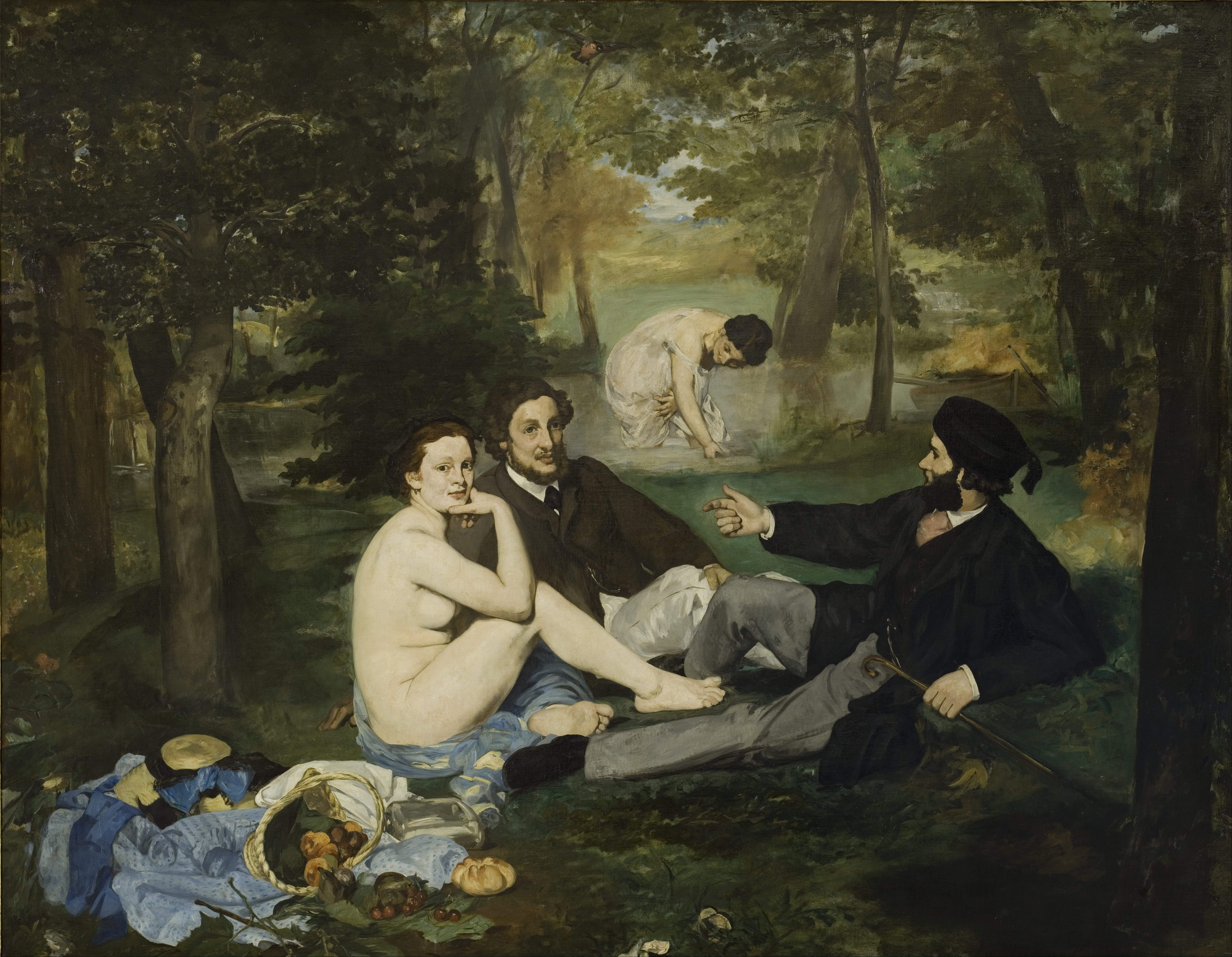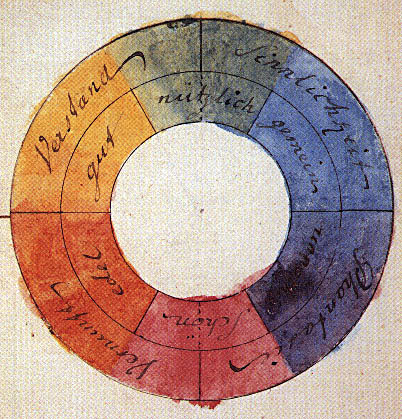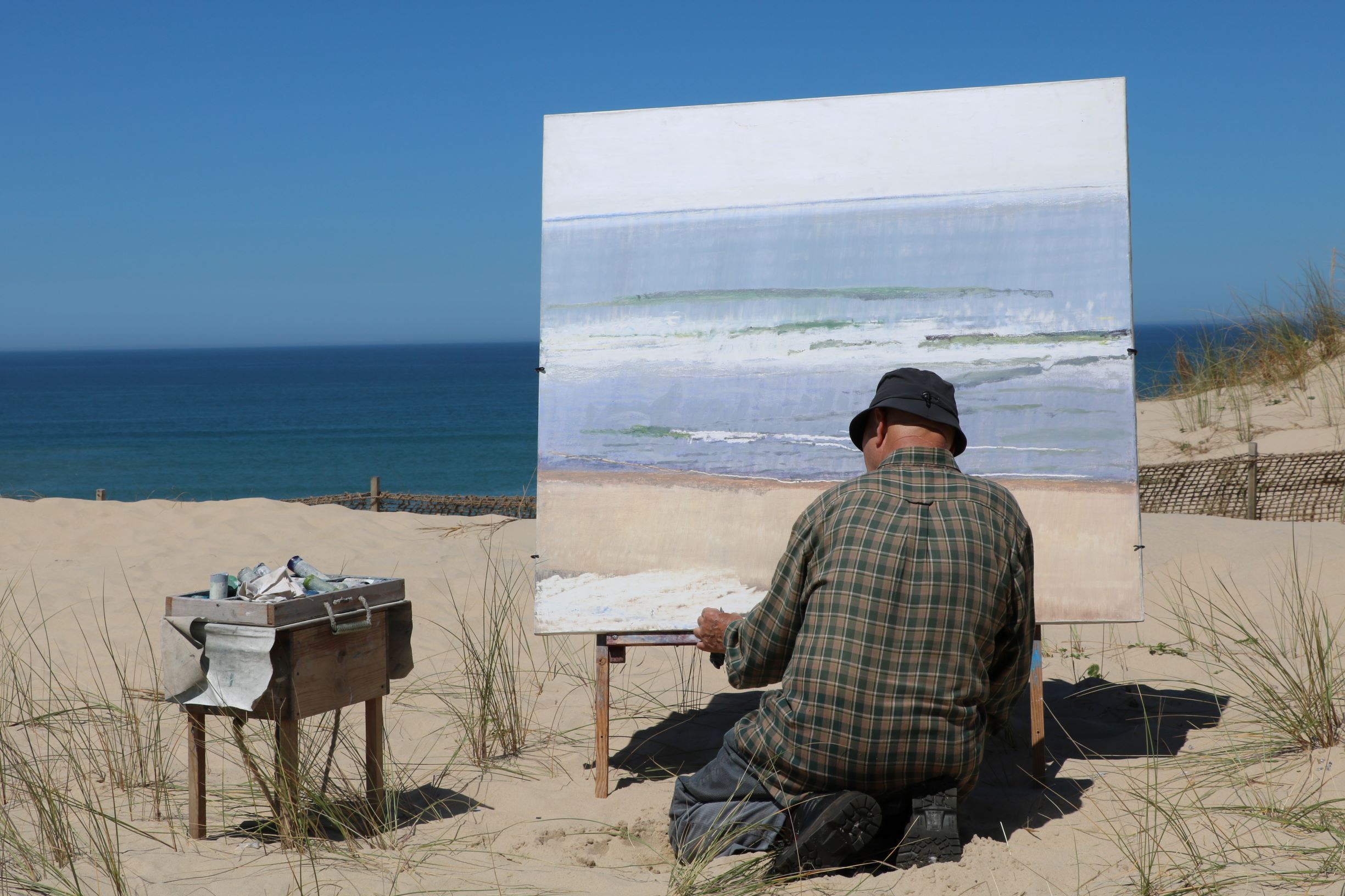|
Colourist Painting
Colourist painting is a style of painting characterised by the use of intense colour, which becomes the dominant feature of the resultant work of art, more important than its other qualities. It has been associated with a number of artists and art movements throughout the 20th century. Influences The French Impressionism movement of the 19th century was influential on the development of Colourist painting and other similar movements such as Fauvism and Expressionism. Impressionists like Claude Monet were known for their use of colour to represent shadow and light, something that later movements would incorporate into their own styles. Impressionists also moved away from more neutral colours such as black or brown, instead using unblended and bright colours, something that differentiated their style from others. Impressionism would prove to be a highly influential movement, with later art movements such as Fauvism taking on similar stylistic choices. Styles Aspects of colourist p ... [...More Info...] [...Related Items...] OR: [Wikipedia] [Google] [Baidu] |
Impressionism
Impressionism was a 19th-century art movement characterized by visible brush strokes, open Composition (visual arts), composition, emphasis on accurate depiction of light in its changing qualities (often accentuating the effects of the passage of time), ordinary subject matter, unusual visual angles, and inclusion of movement as a crucial element of human perception and experience. Impressionism originated with a group of Paris-based artists whose independent exhibitions brought them to prominence during the 1870s and 1880s. The Impressionists faced harsh opposition from the conventional art community in France. The name of the style derives from the title of a Claude Monet work, ''Impression, soleil levant'' (''Impression, Sunrise''), which provoked the critic Louis Leroy to coin the term in a Satire, satirical 1874 review of the First Impressionist Exhibition published in the Parisian newspaper ''Le Charivari''. The development of Impressionism in the visual arts was soon foll ... [...More Info...] [...Related Items...] OR: [Wikipedia] [Google] [Baidu] |
Fauvism
Fauvism ( ) is a style of painting and an art movement that emerged in France at the beginning of the 20th century. It was the style of (, ''the wild beasts''), a group of modern artists whose works emphasized painterly qualities and strong colour over the representational or realistic values retained by Impressionism. While Fauvism as a style began around 1904 and continued beyond 1910, the movement as such lasted only a few years, 1905–1908, and had three exhibitions. John Elderfield, The ''"Wild Beasts" Fauvism and Its Affinities,'' 1976, Museum of Modern Art, p.13, The leaders of the movement were André Derain and Henri Matisse. Artists and style Besides Matisse and Derain, other artists included Robert Deborne, Albert Marquet, Charles Camoin, Bela Czobel, Louis Valtat, Jean Puy, Maurice de Vlaminck, Henri Manguin, Raoul Dufy, Othon Friesz, Adolphe Wansart, Georges Rouault, Jean Metzinger, Kees van Dongen, Émilie Charmy and Georges Braque (subsequently ... [...More Info...] [...Related Items...] OR: [Wikipedia] [Google] [Baidu] |
Expressionism
Expressionism is a modernist movement, initially in poetry and painting, originating in Northern Europe around the beginning of the 20th century. Its typical trait is to present the world solely from a subjective perspective, distorting it radically for emotional effect in order to evoke moods or ideas. Expressionist artists have sought to express the meaningVictorino Tejera, 1966, pages 85,140, Art and Human Intelligence, Vision Press Limited, London of emotional experience rather than physical reality. Expressionism developed as an avant-garde style before the First World War. It remained popular during the Weimar Republic,Bruce Thompson, University of California, Santa Cruzlecture on Weimar culture/Kafka'a Prague particularly in Berlin. The style extended to a wide range of the arts, including expressionist architecture, painting, literature, theatre, dance, film and music. Paris became a gathering place for a group of Expressionist artists, many of Jewish origin, dubbed th ... [...More Info...] [...Related Items...] OR: [Wikipedia] [Google] [Baidu] |
Claude Monet
Oscar-Claude Monet (, ; ; 14 November 1840 – 5 December 1926) was a French painter and founder of Impressionism painting who is seen as a key precursor to modernism, especially in his attempts to paint nature as he perceived it. During his long career, he was the most consistent and prolific practitioner of Impressionism's philosophy of expressing one's perceptions of nature, especially as applied to ''En plein air, ''plein air'''' (outdoor) landscape painting. The term "Impressionism" is derived from the title of his painting ''Impression, Sunrise, Impression, soleil levant'', which was exhibited in 1874 at the First Impressionist Exhibition, initiated by Monet and a number of like-minded artists as an alternative to the Salon (Paris), Salon. Monet was raised in Le Havre, Normandy, and became interested in the outdoors and drawing from an early age. Although his mother, Louise-Justine Aubrée Monet, supported his ambitions to be a painter, his father, Claude-Adolphe, disa ... [...More Info...] [...Related Items...] OR: [Wikipedia] [Google] [Baidu] |
Color Theory
Color theory, or more specifically traditional color theory, is a historical body of knowledge describing the behavior of colors, namely in color mixing, color contrast effects, color harmony, color schemes and color symbolism. Modern color theory is generally referred to as color science. While there is no clear distinction in scope, traditional color theory tends to be more subjective and have artistic applications, while color science tends to be more objective and have functional applications, such as in chemistry, astronomy or color reproduction. Color theory dates back at least as far as Aristotle's treatise ''On Colors'' and Bharata_(sage), Bharata's Natya_Shastra, Nāṭya Shāstra. A formalization of "color theory" began in the 18th century, initially within a partisan controversy over Isaac Newton's theory of color (''Opticks'', 1704) and the nature of primary colors. By the end of the 19th century, a schism had formed between traditional color theory and color science ... [...More Info...] [...Related Items...] OR: [Wikipedia] [Google] [Baidu] |
Complementary Colors
Complementary colors are pairs of colors which, when combined or mixed, cancel each other out (lose chroma) by producing a grayscale color like white or black. When placed next to each other, they create the strongest contrast for those two colors. Complementary colors may also be called "opposite colors". Which pairs of colors are considered complementary depends on the color model that one uses: * Modern color theory uses either the RGB additive color model or the CMY subtractive color model, and in these, the complementary pairs are red–cyan, green–magenta (one of the purples), and blue–yellow. * In the traditional RYB color model, the complementary color pairs are red–green, yellow– purple, and blue– orange. * Opponent process theory suggests that the most contrasting color pairs are red–green and blue–yellow. * The black–white color pair is common to all the above theories. These contradictions stem in part from the fact that traditional color ... [...More Info...] [...Related Items...] OR: [Wikipedia] [Google] [Baidu] |
André Derain
André Derain (, ; 10 June 1880 – 8 September 1954) was a French artist, painter, sculptor and co-founder of Fauvism with Henri Matisse. In 2025, all of Derain’s work entered the public domain in the United States. Life and career Early years Derain was born in 1880 in Chatou, Yvelines, Île-de-France, just outside Paris. In 1895 he began to study on his own, contrary to claims that meeting Vlaminck or Matisse began his efforts to paint, and occasionally went to the countryside with an old friend of Cézanne's, Father Jacomin along with his two sons. In 1898, while studying to be an engineer at the Académie Camillo, he attended painting classes under Eugène Carrière, and there met Matisse. In 1900, he met and shared a studio with Maurice de Vlaminck and together they began to paint scenes in the neighbourhood, but this was interrupted by military service at Commercy from September 1901 to 1904. Following his release from service, Matisse persuaded Derain's parents t ... [...More Info...] [...Related Items...] OR: [Wikipedia] [Google] [Baidu] |
Henri Matisse
Henri Émile Benoît Matisse (; 31 December 1869 – 3 November 1954) was a French visual arts, visual artist, known for both his use of colour and his fluid and original draughtsmanship. He was a drawing, draughtsman, printmaking, printmaker, and sculpture, sculptor, but is known primarily as a painter. Matisse is commonly regarded, along with Pablo Picasso, as one of the artists who best helped to define the revolutionary developments in the visual arts throughout the opening decades of the twentieth century, responsible for significant developments in painting and sculpture. The intense colourism of the works he painted between 1900 and 1905 brought him notoriety as one of the Fauvism, Fauves (French language, French for "wild beasts"). Many of his finest works were created in the decade or so after 1906, when he developed a rigorous style that emphasized flattened forms and decorative pattern. In 1917, he relocated to a suburb of Nice on the French Riviera, and the more re ... [...More Info...] [...Related Items...] OR: [Wikipedia] [Google] [Baidu] |
Kapists
Kapists or KPists (Polish: ''Kapiści'', from KP, the Polish acronym for the Paris Committee), also known as the Colourists, were a group of Poland, Polish painters of the 1930s who dominated the Polish artistic landscape of the epoch. Contrary to Romanticism in Poland, Polish romanticist traditions, the Kapists underlined the independence of art from any historical tradition, symbolism or influences of literature and history. They were formed around Józef Pankiewicz and were under the strong influence of the French Post-Impressionism, Post-Impressionists. The name of the movement was derived from the full name of the so-called ''Paris Committee'', or ''Paris Committee of Relief for Students Leaving for Artistic Studies in France'' (). Apart from Pankiewicz, among the best-known Kapists were Jan Cybis, Józef Czapski, Józef Jarema, Artur Nacht-Samborski, Eugeniusz Geppert, Piotr Potworowski, Hanna Rudzka-Cybisowa, Hanna Rudzka and Zygmunt Waliszewski. In 1930, the Kapists held ... [...More Info...] [...Related Items...] OR: [Wikipedia] [Google] [Baidu] |
Scottish Colourists
The Scottish Colourists were a group of four painters, three from Edinburgh, whose Post-Impressionism, Post-Impressionist work, though not universally recognised initially, came to have a formative influence on contemporary Scottish art and culture. The four artists, Francis Cadell (artist), Francis Cadell, John Duncan Fergusson, Leslie Hunter and Samuel Peploe, were prolific painters spanning the turn of the twentieth century until the beginnings of World War II. While now banded as one group with a collective achievement and a common sense of British identity, it is a misnomer to believe their artwork or their painterly careers were homogeneous. Generally however, the group shared a common interest in the artistic developments occurring in France and are shown to dabble with different styles such as Cubism, Post-Impressionism, Fauvism, and Futurism. The movement seemed to fall out of favour by the end of World War II, and did not experience a revival until the 1980s. Their works ... [...More Info...] [...Related Items...] OR: [Wikipedia] [Google] [Baidu] |
En Plein Air
''En plein air'' (; French language, French for 'outdoors'), or plein-air painting, is the act of painting outdoors. This method contrasts with studio painting or academic rules that might create a predetermined look. The theory of 'En plein air' painting is credited to Pierre-Henri de Valenciennes (1750–1819), first expounded in a treatise titled ''Reflections and Advice to a Student on Painting, Particularly on Landscape'' (1800), where he developed the concept of landscape portraiture by which the artist paints directly onto canvas ''in situ'' within the landscape. It enabled the artist to better capture the changing details of weather and light. The invention of portable canvases and easels allowed the practice to develop, particularly in France, and in the early 1830s the Barbizon School of painting in natural light was highly influential. Amongst the most prominent features of this school were its tonal qualities, colour, loose brushwork, and softness of form. These wer ... [...More Info...] [...Related Items...] OR: [Wikipedia] [Google] [Baidu] |







